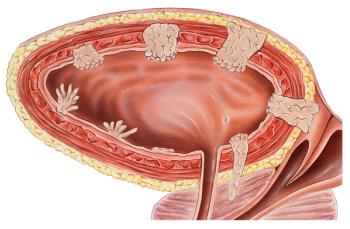
Fragment Analysis Able to Detect MET exon 14 Skipping Deletions in NSCLC Missed by NGS
This study found that fragment analysis had the ability to detect large MET exon 14 skipping deletions that were missed by next-generation sequencing in non-small cell lung cancer tumor samples.
A study presented at the MAP 2020 Virtual Congress, held from October 9-10, 2020, found that a comparison of 2 techniques used in the screening of non-small cell lung cancer (NSCLC) tumor samples revealed that fragment analysis had the ability to detect large MET exon 14 skipping deletions that were missed by next-generation sequencing (NGS).
The study was conducted to evaluate the utility of NGS compared with fragment analysis for the detection of MET exon 14 alterations, including skipping deletions that serve as an oncogenic driver and are seen in 1% to 4% of NSCLC tumors.
Notably, capmatinib (Tabrecta) was recently approved by the FDA for the management of adult patients with metastatic NSCLC with MET exon 14 skipping mutations, making detection of MET alterations necessary to identify candidates who may benefit from treatment with this agent.
In this study, researchers evaluated 87 NSCLC wild-type samples for MET exon 14 by NGS and fragment analysis that were obtained in routine settings within an 18-month period from patients with driver wild-type NSCLC. Of note, MET exon 14 skipping was screened by fragment analysis to detect large deletions in MET exon 14 and by DNA NGS on an Ion Proton platform using AmpliSeq technology. Large deletions detected by only fragment analysis were also characterized by Sanger sequencing and PD-L1 tumor expression was quantified by immunohistochemistry.
Of a total of 87 patient samples assessed by fragment analysis and sequencing, a MET exon 14 skipping alteration was observed in 13 patients. Among these 13 patients, 8 samples were found to have deletion impacting splice site and 5 had splice variants. Moreover, of the 8 deletions, 2 were large deletions of 41 bp and 66 bp; however, these 2 deletions were only determined by fragment analysis and were not detected by NGS.
Importantly, there was no enrichment in samples with sarcomatoid features histologically.
However, the investigators did observe an association with PD-L1 expression; samples with MET exon 14 skipping presented higher values of PD-L1 than other tumors screened in this study.
With everything considered, the researchers concluded that detection of MET alterations is warranted for first-line treatment decision to detect exon 14 skipping and allow patient access to targeted therapy, such as capmatinib, as well as to identify patients that may have a poor response to immunotherapy. Further, these results highlight the limit of NGS to examine large deletions and the risk of false negative results, according to the study authors.
Of note, this study underscores that NGS, using standard pipelines and panels, may fail to detect MET exon 14 mutations. Thus, complementary methods or large coverage intron screening could also be alternatively used in order not to miss samples with MET alterations that could impair first-line treatment choices in patients with NSCLC.
Nevertheless, the relationship between MET exon 14 and PD-L1 expression requires further study.
Reference:
FRAGMENT ANALYSIS IS A MORE RELIABLE MET EXON 14 SCREENING STRATEGY FOR IDENTIFYING LARGE DELETIONS [news release]. Published October 9, 2020. Accessed October 28, 2020. https://www.esmo.org/oncology-news/fragment-analysis-is-a-more-reliable-met-exon-14-screening-strategy-for-identifying-large-deletions
Newsletter
Stay up to date on recent advances in the multidisciplinary approach to cancer.


























































































